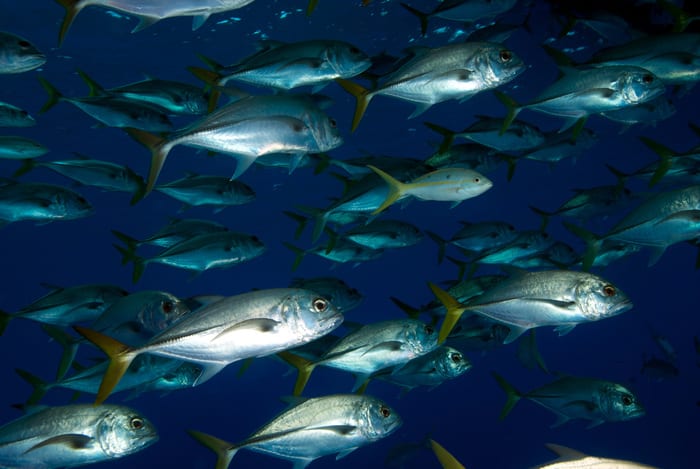USSEC Successfully Launches International Aquaculture Feed Formulation Database in Latin America
- Category:
- Aquaculture
- General News

USSEC organized two seminars and workshops focusing on sustainable aqua nutrition and feed formulation in Guadalajara, Mexico & Guayaquil, Ecuador, respectively, where aquaculture production is highly concentrated in the Americas region. Every workshop activity was concentrated on sustainable aqua nutrition and feeds formulation with the International Aquaculture Feed Formulation Database (IAFFD) database and the use of soy as well as its byproducts for fish & shrimp feed production. Those cities were selected for the event location because around 70 percent of the aqua production of the region is located in those countries.
Aquafeed formulation hands-on training along with the presentation of the USSEC IAFFD aqua database were presented by Dr. Bureau from Guelph University and local USSEC representatives Mark Newman and Jairo Amezquita.
Aquaculture feeds are becoming complex mixtures of an ever-increasing number of ingredients of plant, animal, and microbial origin. Feed manufacturers require robust but highly flexible tools to assist them in the formulation of cost-effective feeds. Furthermore, socioeconomic factors, local preferences, and competition result in significant market segmentation.
The IAFFD is the first standardized, commercially viable, publicly available formulation database for aquaculture. The database was developed to target and train aquaculture formulators in large groups, similar to what was done by USSEC with the terrestrial animal industry. USSEC has also developed the IAFFD to help support the farmers to make well-balanced aquafeed.
USSEC kicked off these seminars and workshops with a conference in Guadalajara, Mexico on August 12 and 13, targeted at more than 30 commercial aquaculture feed nutritionists and formulators in Mexico and Central America. The same workshops in Guayaquil, Ecuador on August 15 and 16 followed this event, attended by more than 30 commercial aquaculture feed nutritionists and formulators from Ecuador, Colombia, and Peru. This was the first successful interaction of the workshop concept for the Americas region, which focused more directly on commercial aquaculture formulators and moves to a collaborative relationship with commercial companies that can lead the formulation exercises. Several times during the workshops, U.S. soy products organically became part of formulations created by the formulator based on quality of the nutrients. The formulation workshops demonstrate the value of U.S. Soy based on intrinsic quality through actual formulation to key target audiences. USSEC could clearly demonstrate the value of U.S. soy products for the formulators and nutritionists of the commercial feed mills who attended, as they are key influencers in the purchase of U.S. Soy. USSEC’s work with the IAFFD and holding formulation workshops directly impacts the role of USSEC to differentiate and promote U.S. Soy specifically.
USSEC plans to make these formulation workshops a yearly event, as the IAFFD incorporates the issues, suggestions and lessons learned from site use. The IAFFD will be one of USSEC’s key programs moving forward to directly target the increasing use of U.S. soy products in aquaculture diets.